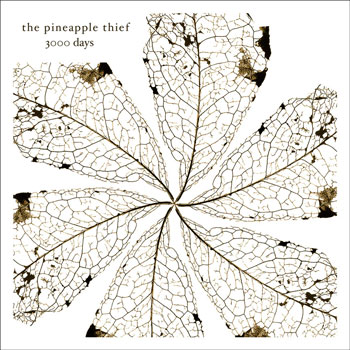By Adrien Begrand
CHRIST said: Love your enemies.
CHRIST’S Enemy was SATAN and SATAN’S Enemy was CHRIST.
Through Love enmity is destroyed.
Through Love saint and sinner destroy the enmity between them.
Through Love CHRIST and SATAN have destroyed their enmity and come together for the End;
CHRIST to Judge, SATAN to execute the Judgment.
The Judgment is WISDOM; the execution of the Judgment is LOVE.
(The Process Church of the Final Judgment literature, 1967)
Every church needs a good gimmick, and in the mid-1960s, former Scientologist Robert DeGrimston came up with a doozy. Not only did his new church teach the usual idea of love conquering evil, but he developed the notion that God and Satan act symbiotically, not merely as antagonists. According to him, light and dark go hand in hand during the world’s constant state of change, and Jehovah, Satan, Christ, and Lucifer were all to be embraced as opposite but equal entities. To DeGrimston, the “Process” was about mankind’s preparation to receive the final judgment by thosee four deities.
Combining the very hippie-friendly ideal of “love your enemy” with a brazenly blasphemous bent (ministers wore black cloaks, Saturday masses – or “Sabbath assemblies” – featured both the Christian cross and the Goat of Mendes), the Process Church attracted a strong following for nearly a decade. Celebrities even dabbled in it, such as Mick Jagger, Marianne Faithfull, James Coburn, and even Mary Tyler Moore. Funkadelic’s classic 1971 album Maggot Brain even included a lengthy Processean screed inside its gatefold. After gaining unwanted notoriety when Vincent Bugliosi implied that Charles Manson was philosophically inspired by the Process in his book Helter Skelter, the church eventually fizzled, DeGrimston removed in 1974 and the organization eventually shifting its focus towards animal welfare.
Despite being a popular, liberal, legitimate West Coast church, doing a lot of charity work, performing weddings and baptisms, and even creating its own songbook of hymns, the Process remains somewhat of a mystery, with very little in the way of recorded material. Thanks to San Francisco doom/psychedelic singer Jex Thoth, Dave Nuss of New York’s experimental No Neck Blues Band, and Sunn O))) producer Randall Dunn, nine of the Process’s simple yet haunting hymns have been given a psychedelic-tinged makeover, and the end result is one of the most spellbinding albums of the year.
The original Process hymns that are presented on Sabbath Assembly’s Restored to One turned out to be simple enough to allow for Thoth and Nuss to tinker with the songs’ arrangements while staying true to the original melodies, which makes for a brilliant contrast throughout the album. Both sides, religious fanaticism and understated secular rock ‘n’ roll, combine to create a mood that is as entrancing as it is unsettling. Thoth, who has never sounded better on record, immediately draws listeners in with her dulcet voice, but at the same time throws in a strong dose of darkness, whether it’s in her sombre vocal melodies or the way she pronounces each word succinctly, conveying the passion of a true convert. Nuss, meanwhile, creates a haunting musical backdrop that immediately hearkens back to late-’60s psychedelic rock, as well as a hint of the eerie music created by Paul Giovanni and Magnet for the classic 1973 film The Wicker Man.
Remarkably, and to the credit of Thoth and Nuss, the album shifts gears often enough to avoid sounding repetitive. Nuss hints at raga on “Glory to the Gods in the Highest” and absolutely runs with the idea on the haunting, Doors-esque “Judge of Mankind”. “Hymn of Consecration” is given a bluesier treatment, a fitting backdrop for Thoth’s impassioned invocations, “And the Phoenix is Reborn” is even darker, even verging on proto-doom metal, while “Glory Hallelujah” is given a straight-up Gospel treatment.
In fact, the straight-faced reading of “Glory Hallelujah” is key: not for a second do we detect even a hint of irony on this track, or anywhere else on this album. Unlike an indie rock project that smugly covers obscure songs for postmodern kicks, nobody’s winking at the audience here, which makes this record all the more disturbing. Like Nick Cave’s Murder Ballads, it’s either played with complete sincerity or at the very least sold as such. Thoth especially is jarringly, even defiantly devout from start to finish. She verges on giddy, girlish joy on “Glory Hallelujah”, but then does an immediate about-face when she intones with great intensity on “Judge of Mankind”:
Lord of the End, Lord Satan
The God of Love, Lord Satan
Redeem our souls, Lord Satan
Receive our emotions
We offer you, Lord Satan
Devotion, Lord Satan
We pledge to you, Lord Satan
Devotion, Lord Satan
For those who listen to a lot of metal, Satanic shtick is commonplace, but rarely does such a theme pack as big a wallop as it does on Restored to One. Yet at the same time, that’s only half of what the Process preached. They embraced both sides equally, and the fact that Thoth and Nuss sound so convincing whether praising Lucifer or Jehovah is what makes this album feel so daring. Black metal scenesters will cringe at the Jesus bits, Christian metal kids will roll their eyes at the Devil stuff, indie fans will still be wondering just how much of this is just a big piss-take. And all the while Jex Thoth and Dave Nuss have their minds on much deeper issues than bitching about which deity is the right one. The end is nigh, the jig is up, and nobody is even close to being prepared for it.
(The AJNA Offensive)
http://www.myspace.com/sabbathassembly


